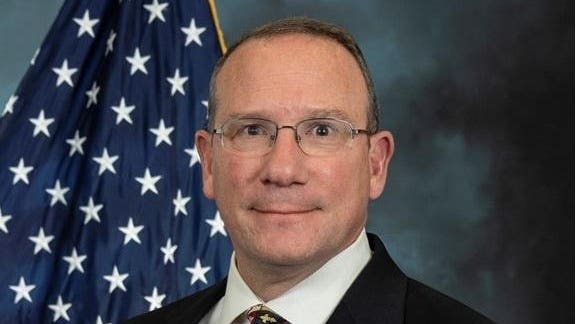Cybersecurity is a pressing concern for governments, corporations, and individuals alike. As critical infrastructure and sensitive data face mounting threats, the U.S. Department of Energy (DOE) has taken significant strides to fortify its cybersecurity defenses. By integrating government compliance, regulation, and laws, along with executive orders, the DOE is adapting to emerging cybersecurity challenges.
Government agencies are mandated to follow stringent guidelines to safeguard sensitive information and critical systems from cyber threats. By adhering to these standards, the DOE ensures its facilities and data repositories are shielded against potential vulnerabilities, minimizing the risk of cyberattacks and data breaches. In tandem with compliance measures, executive orders play a crucial role in bolstering the nation’s cybersecurity. These orders provide essential directives to government agencies, pushing for the adoption of best practices and the integration of cutting-edge technologies to fortify defenses. They also call for increased collaboration between government entities and the private sector, fostering a comprehensive cybersecurity ecosystem that collectively thwarts potential threats.
Approaching the concept of zero trust
It’s hard to have a discussion around cybersecurity without the concept of zero trust being part of the conversation. At a high level, zero trust is a cybersecurity approach that challenges the traditional notion of assuming trust within a network. The conceptual approach treats every user, device, and application as potentially untrusted. It requires continuous authentication and verification for users and devices seeking access to resources, regardless of their location or origin. By adopting the zero trust approach, organizations can enhance security levels and minimize the risk of unauthorized access and lateral movement by potential adversaries.
In a recent GovFuture Podcast, Ignatius “Buck” Liberto, Director, Cybersecurity Risk Management & Compliance, Office of the Chief Information Officer, U.S. Department of Energy shares how DOE is approaching the concept of zero trust and how it is evolving in the organization.
Mr. Liberto shares “We have so much legacy architecture. We have so many legacy protocols. We have so many role based approvals and access authorizations out there that that zero trust is a concept because it’s going to be expensive in my opinion, and it’s going to be time consuming, also in my opinion, to really get to full implementation. So I think the concept, number one, has already begun in the good old days and I’m not going back that many years, probably five years or less. The mindset of access was always ‘allow all, deny by exception’. That was based a lot on your perimeter security.”
“At some point we got very wise, we the federal government, and said stop,” Buck continues. “We need to make this a ‘deny all allow by exception’, and that certainly helped out a lot as we moved forward. And that’s really part of the zero trust architecture at an enterprise level and not at an enclave or lower level and enterprise level. And that’s what we’re going to manage, you know, tens of thousands, hundreds of thousands of users to ensure that not only they are who they are and they have the right access, but they have the authority to access specific servers. For example, a database server or specific database server or email server or web server within the network’s architecture. It’s getting a lot of momentum. It was directed in the executive order signed by the president and we’re moving in a very good direction. And it’s going to require innovations and require partnership with our vendors. It’s going to require everybody buying into the concept and then ultimately having an education program that can meet those very specific goals and objectives.”
The ever-evolving cybersecurity landscape
As the cybersecurity landscape evolves rapidly, it is imperative for the DOE and federal government to remain vigilant and up-to-date with emerging technologies. Threat actors continuously innovate, devising new ways to exploit weaknesses in systems and networks. By staying aware of the latest cybersecurity practices and solutions, the DOE is proactively addressing potential vulnerabilities and anticipating novel attack vectors.
Moreover, embracing evolving technologies enables the DOE to enhance its incident response capabilities, enabling quicker detection and mitigation of cyber threats. An agile and adaptive cybersecurity posture empowers the agency to minimize the impact of attacks and maintain the integrity of critical infrastructure.
Mr Liberto shares “It starts really with training awareness with the user and also starts with the system. Network engineers and security defenders doing their job checking the logs looking for the anomalies is machine learning is automation helping absolutely when you look at the progression of just intrusion protection systems and next generation firewalls. From a technology standpoint, we’re certainly helping so we’re looking for those anomalies that will then trigger alerts that will help the defenders. But the adversary learns. The adversary knows what our defenses look like. They know that we have a layer of defense. They know that we’re hardening our perimeter. So they’re going back, you know, you talked about you know 3000 year old technology of walls and forts, well there, they’re also using good old fashioned social engineering. So you have to be really vigilant. That’s where a good training awareness program starts.”
The Department of Energy’s focus on cybersecurity, driven by government compliance, regulation, laws, as well as executive orders, is paramount in safeguarding the nation’s critical assets. Embracing emerging approaches including the zero trust concept allows the DOE to challenge traditional security paradigms and establish a robust defense against ever-evolving cyber threats. By investing in emerging technologies and staying current with the latest cybersecurity trends, the DOE demonstrates its dedication to maintaining national security and protecting the nation’s critical infrastructure from the ever-looming specter of cyber attacks. To learn more listen to the full GovFuture Podcast with Ignatius “Buck” Liberto.
Disclosure: Kathleen Walch is an Executive Director at GovFuture.
Read the full article here










